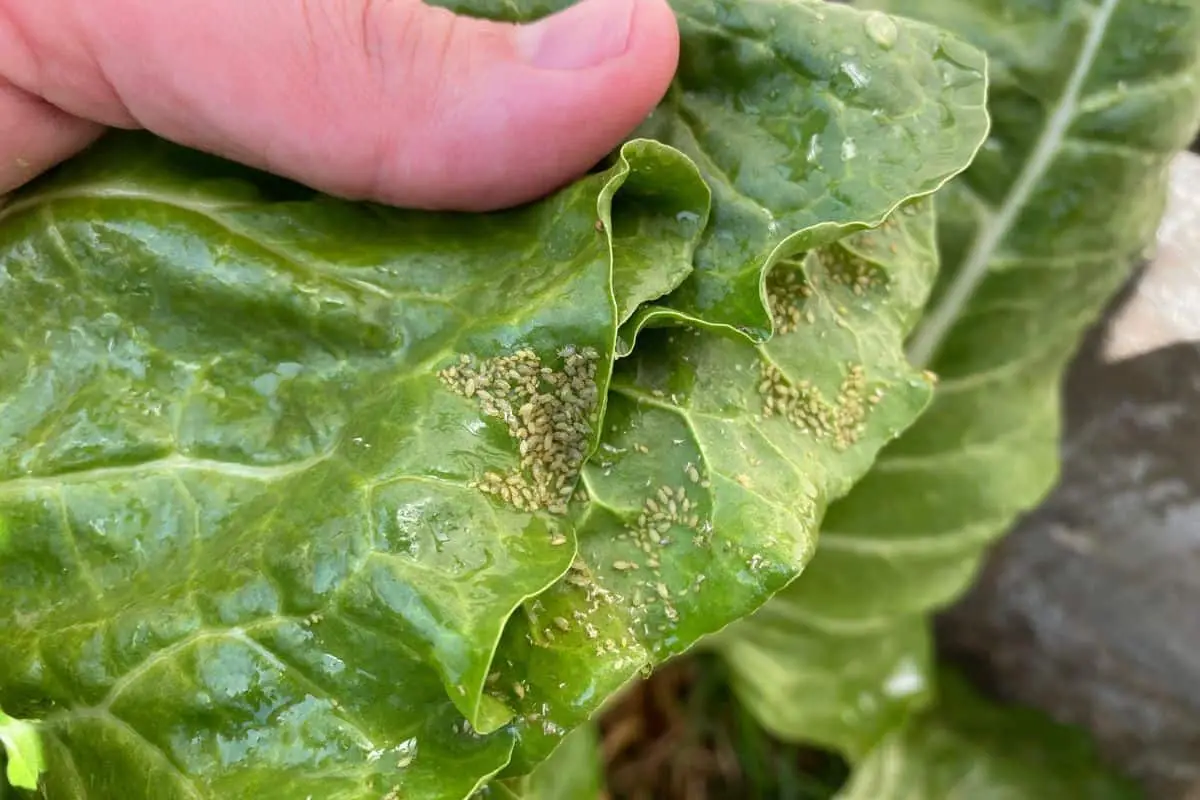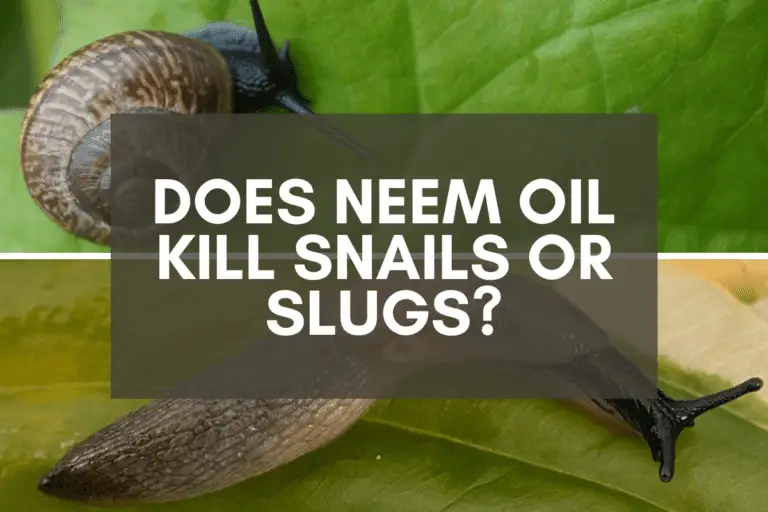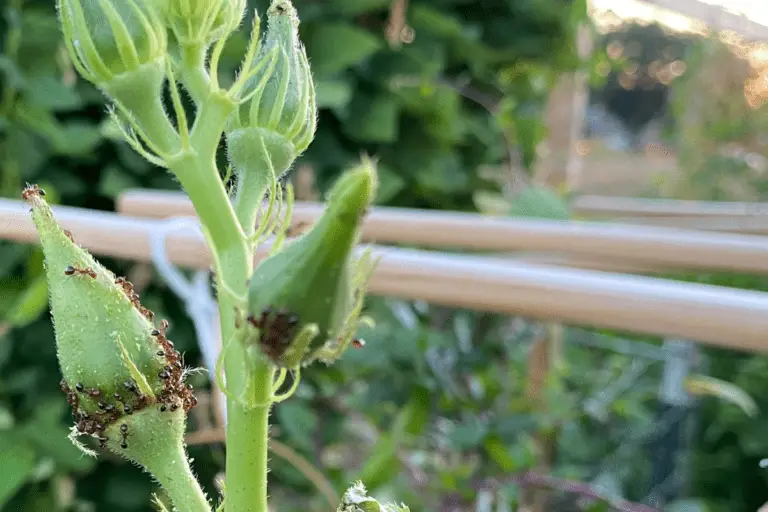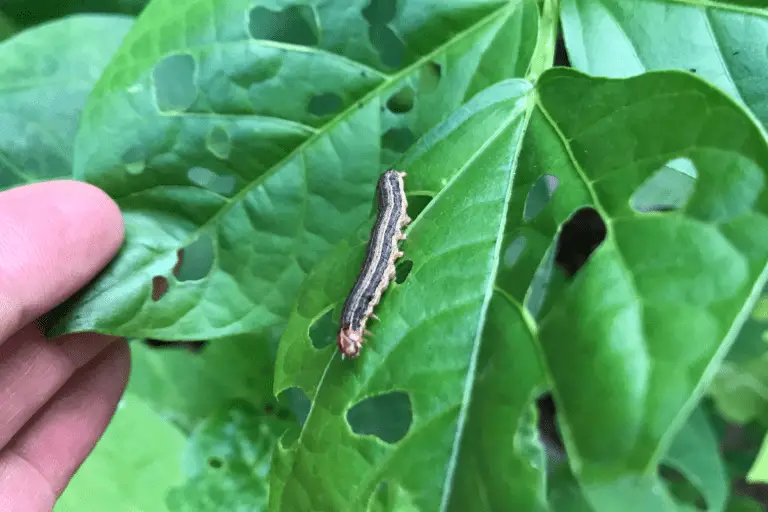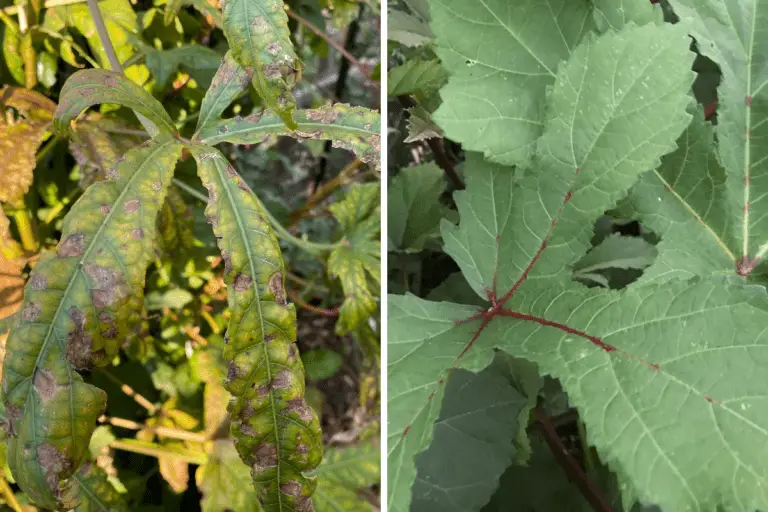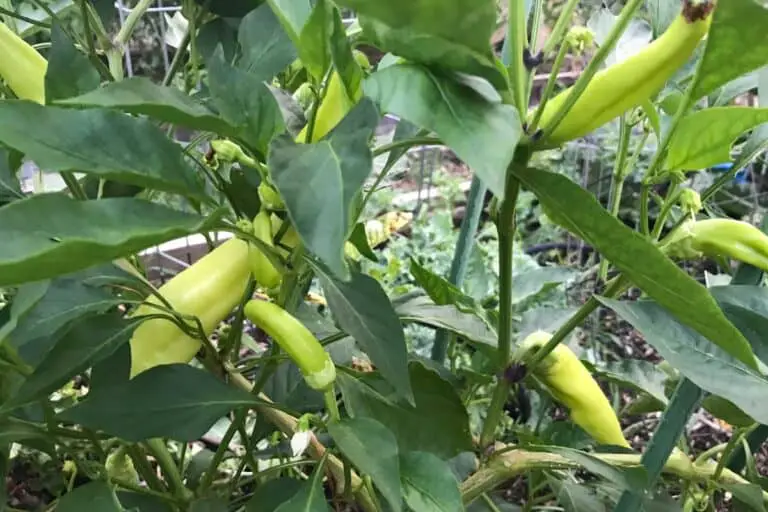21 Plants That Aphids Attack and Eat + How to Stop Them
For such small creatures, aphids can really cause really big problems in your garden.
If you’ve ever had a plant with a few little crawling dots one day, then come back the next to find it completely covered in dots, then you likely know how frustrating and overwhelming aphid infestations can be.
But which plants do aphids love most? And what’s the best way to get rid of them once they arrive in your garden?
Aphids love to feed on camellias, dahlias, nasturtiums, and roses as well as citrus plants, fruit trees, shade trees, and shrubs. They’ll also attack popular garden varieties such as beans, beets, bok choy, broccoli, cabbage, chard, cucumbers, kale, lettuce, okra, spinach, squash, and tomatoes.
I’ve spent a lot of time in my garden, and right as I think I know which plants of mine are likely to attract aphids, I come across a new plant that they’ve attacked. With over 4,700 species of aphids worldwide though, it’s no wonder!
Because there are so many different species–and since aphids spread in several different ways–most plants in your garden can be attacked by aphids. The determining factor will be which species of aphid are common in your area and which plants you’ve got growing in your garden right now.
Although different aphids varieties feed on different kinds of plants–which I’ve written about extensively in articles on black aphids, green aphids, red aphids, yellow aphids, and white aphids–the more you know about their feeding patterns, the quicker you can spot aphids in your garden and help your plants recover from aphid attacks.
In this article, I’ll provide an in-depth overview of the various plants aphids attack plus some tips and tricks to getting rid of them as quickly as possible.
If you want to know exactly what aphids will do to your plants–and if you’re looking for good ways to get rid of them–I’ll have all kinds of information for you below.
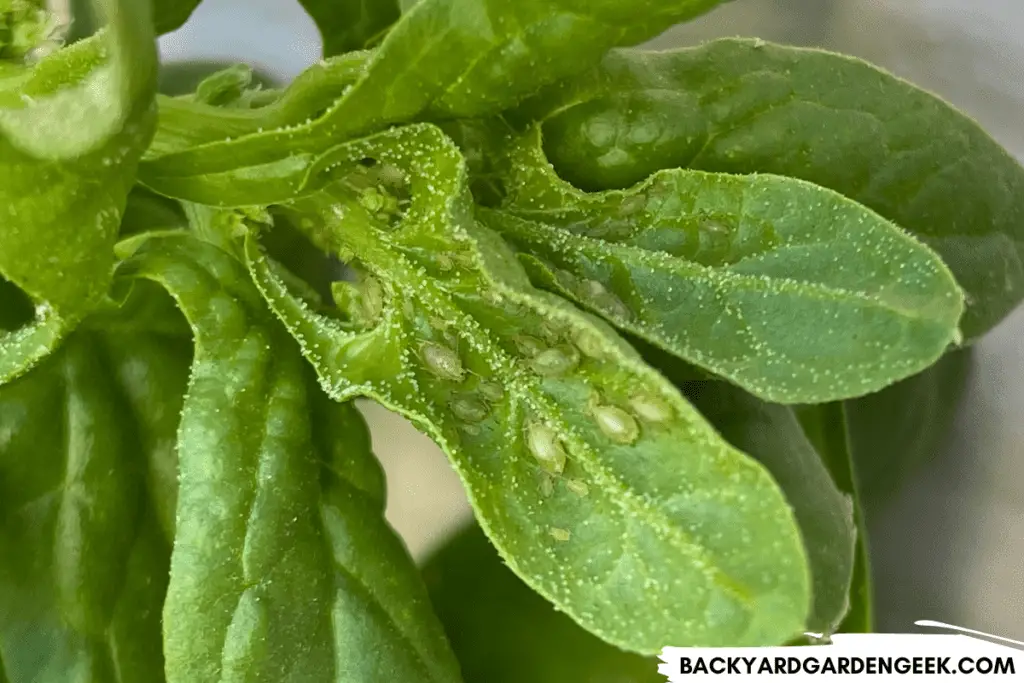
What Plants Do Aphids Eat Most Often?
To clear some things up right away, aphids don’t “eat” plants like snails or caterpillars do.
All aphid species are from the family Aphididae and are considered phloem feeders. They use their sucking mouthparts to penetrate plant tissue and suck the sap from the leaves and stems of the plant.
The leaves and stems will remain intact and whole, but aphids will consume plant sap and thus reduce the plant’s available nutrients.
Unlike ticks, aphids can’t harm humans and won’t attack your pets, but if you leave them alone, they’re likely to multiply and eventually kill off your plants.
Aphids can also act as disease vectors (like a mosquito carrying malaria) and can infect your healthy plant with nasty viruses when they insert their mouthparts into the plant. This means they can keep damaging the plant even after you’ve gotten rid of them.
All the sap that aphids eat has to go somewhere, and like every other living thing, they release their waste product as small droplets known as honeydew. These are the leftover sugars from the sap.
Honeydew not only attracts ants (who love to eat it), but it can also accumulate on leaves, creating a sticky surface that can easily catch fungal spores. This stickiness allows fungal diseases to gain a foothold on your plants.
This article would never end if I attempted to list every single plant that aphids attack, but I want to highlight some of the more popular plant varieties since you’ll benefit from knowing what to expect when aphids arrive.
Some of the most impacted garden plants are:
- Beans
- Beets
- Bok Choy
- Broccoli
- Cabbage
- Camelias
- Chard
- Citrus
- Cucumbers
- Dahlias
- Kale
- Lettuce
- Loofah
- Nasturtiums
- Okra
- Pumpkins
- Roses
- Spinach
- Squash
- Stone Fruit (apples, cherries, nectarines, peaches, plums)
- Tomatoes

Beans
Aphids love all kinds of bean plants. They’ll gather on bean leaves, and they love to cluster around emerging buds. They’ll even multiply along the stems of bean plants.
If you see ants climbing along your bean leaves, the odds are fairly high that you’ve got aphids somewhere among your plants.
The good news is that bean plants are often prolific producers, so they’ll continue growing strong even with mild to moderate aphid infestations.
But if the aphids begin multiplying exponentially, they’ll begin depriving the plant of its vital nutrients.
Beets
Beet greens are prone to aphid attacks since aphids love attaching themselves to the wispy leaves that grow aboveground. They won’t attack the root vegetable itself because beets grow below the surface of the soil, but they’ll multiply all across the leaves.
The good news is that aphids only attach themselves to the leaves of the plant. The bad news is that aphids can destroy the plant before its root has had enough time to fully mature.
As they multiply on the leaves of the plant, they’ll produce countless offspring, and they’ll often begin attacking other nearby plants if you’re not careful.
Bok Choy
I’ve had pretty decent luck when it comes to bok choy. There are aphids species that’ll attack bok choy plants, but they haven’t shown up in my garden yet.
In fact, I had bok choy growing right next to aphid-infested spinach, and the aphids on the spinach completely ignored the bok choy plants nearby. I saw a few little dots on the bok choy, but that’s about it.
Unfortunately, there are aphids species that attack bok choy plants, so if you see little dots on your bok choy, you’ll need to act quickly before the pests begin attacking your plant foliage en masse.
Broccoli
Aphids are notorious broccoli pests. When they attack broccoli plants, they’ll not only cluster on the leaves of the plant. They’ll also gather on the newly formed broccoli heads.
When this happens, they can be particularly destructive because they’ll begin damaging the broccoli before it can fully mature.
If left untouched—and if you don’t have any beneficial predatory bugs in your garden—the aphids will continue multiplying until they stunt the growth of the broccoli plant and damage anything you would’ve eaten.
Cabbage
Aphids will damage cabbage in ways that are similar to the damage they’ll wreak on broccoli.
As the cabbage slowly matures, aphids will cluster around the emergent cabbage head and begin attacking it, sucking out as much phloem as possible.
The earlier that aphids attack your cabbage, the more damage they’ll inflict on your plant.
Camellias
Camellias are like citrus in that aphids prefer the new tender growth of spring flushes rather than the tougher, fully developed leaves.
Aphids will mass on the new shoots and cause stunted growth and deformed leaves as they fully develop.
Camellias also suffer similar issues with sooty mold from the honeydew secreted by aphids, which restricts the amount of light the leaves can absorb for photosynthesis and affects the overall health of the plant.

Chard
Last year, aphids began multiplying across my chard. I had to battle of them for several weeks, and although it took some effort, I was able to rid my plants of them.
One nice thing about chard is that it’s a fairly resilient plant. My chard suffered a bit under the aphids, but the plants recovered quickly once I began attacking the source of the problem.
I chalk this up to the thick stems and relatively tough leaves. If you ignore the aphid infestation, then the aphids will likely do some major damage to your plants over time.
But if you do as I did and tackle the problem head on, you shouldn’t have any long-term issues with aphids on your chard.
Citrus
Like roses, aphids love citrus plants and will often go after the tender, young springtime growth. This is an easier target than the thicker mature leaves which have fully developed oil glands that aphids don’t seem to like as much.
Depending on your citrus species, you might find black citrus aphids, melon aphids, or spiraea aphids attacking your plants.
Aphid damage on citrus often results in curled and underdeveloped new growth, which can mean a season of lost growth. You’re also guaranteed to have issues with sooty mold from honeydew, and you’ll likely also have problems with ants on your trees as they ”farm” the aphids in search of honeydew droplets.
Cucumbers
Cucumbers, melons, and zucchinis are all from the cucurbit family and are all impacted by the melon and cotton aphids.
These aphids are yellowy green but can also be black. They’ll amass all over the plant, including on leaves, stems, flowers, and developing fruit, meaning that an infestation can be quite devastating to your crop.
Aphids will cause leaf curl and stunted growth, and the feeding they’ll do on the flowers and young fruit will cause irreparable damage and can even ruin your entire cucumber crop if you don’t address the problem quickly.
Dahlias
Yellow, green, and black, aphids will often attack dahlias and will hang out in large clusters on the underside of the plant’s leaves. This causes leaf yellowing, distortion, and drop.
Arguably the worst problem with aphids on dahlias is their ability to infect the plants with mosaic viruses. These viruses can cause deformed and discolored leaves and flowers even after you’ve taken care of the aphids.

Kale
Like other plant varieties, whether aphids end up on your kale largely depends on what kinds of aphids you’ve got in your garden this year.
For example, this year I had to work consistently to keep my yardlong beans free of aphids. One week they looked great, the next they were covered in tiny dots.
However, those aphids steered completely clear of my kale even though, a few months earlier, aphids were all over my kale but completely uninterested in the beans.
If you’ve got aphids on your kale, don’t worry. Kale is a relatively hardy plant, so if you address the problem quickly and consistently, you’ll be rid of them in no time at all.
Lettuce
Unlike kale, lettuce leaves aren’t as resilient once aphids show up in your garden. They’ll cluster under mature leaves but also gather around newly emerging ones.
Over the past few years, I’ve had less of an issue with aphids in my lettuce than I have with aphids in my kale and spinach, but they’ll happily suck the sap out of lettuce plants if given the opportunity to do so.
If you plan to hose the aphids off your lettuce plants, just be careful. You can easily damage the fragile leaves if you spray your plants with too much force. On the other hand, if you don’t spray them forcefully enough, the aphids will just remain in place, so you’ll need to read below to see my suggestions when it comes to ridding your plants of aphids.
Loofah
Loofah plants (also known as luffa) are a magnet for certain aphid pieces.
But here’s the good news about loofahs: They grow so quickly and there’s such hearty plants that they can withstand moderate or even extreme aphid infestations.
At the community garden where I volunteer, I saw several loofah plants that were absolutely covered in aphids. The worst part about the infestation was not the damage the aphids did to the loofah plants. It was the fact that the loofah plants provided a staging ground for the aphids to multiply and spread to other corners of the garden.
This is the worst part about moderate or extreme aphid infestations. They make it possible for aphids to establish a breeding ground in your garden since aphids can do just fine in cold temperatures and even survive relatively harsh winters to reemerge and attack your plants the following year.
Nasturtiums
Nasturtiums are a plant that can get decimated by aphids. Depending on your garden though, aphids attacking your nasturtiums could be good or bad.
Black bean aphids will attack the leaves, stems, and flower buds of the plant, causing leaves to drop and flower buds to fail. Aphids will hide on the underside of the big umbrella-like leaves for protection, so they can be a bit trickier to spot.
If you’re intentionally growing nasturtiums for their flowers, then aphids are bad news, but if you’re in a region where they’re weedy and can easily get away from you, then aphids can help you keep on top of them.
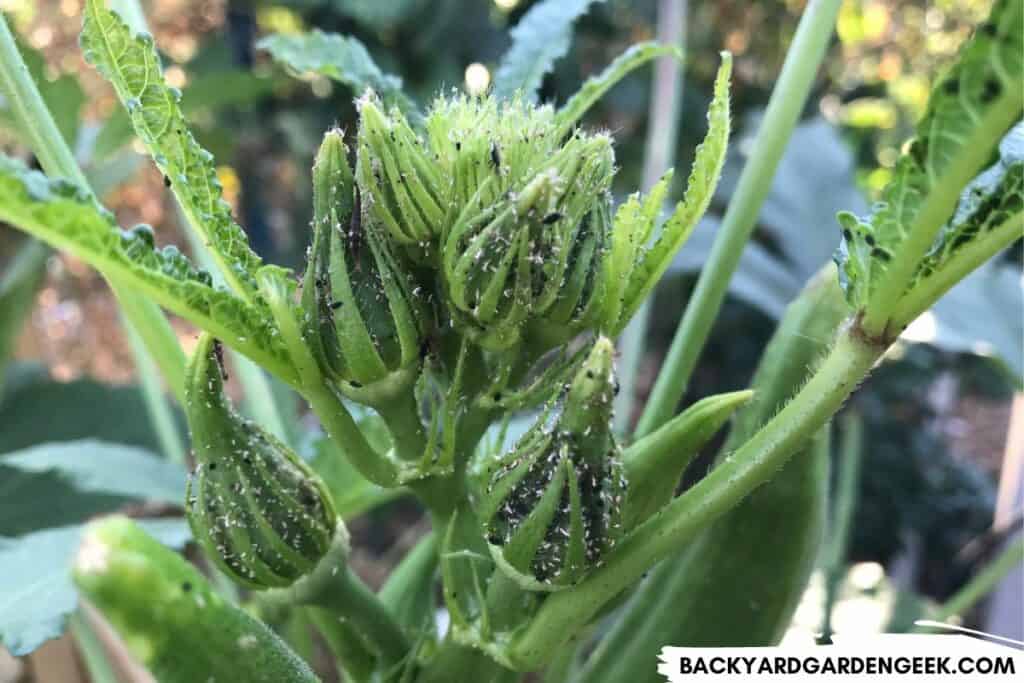
Okra
Last summer, aphids found their way to the okra plants I was growing at the community garden, and they started multiplying fairly quickly. However, okra plants can handle just about anything, and after seeing a few ladybugs on the plants, I decided not to spray them with anything.
The good news is that okra is an incredibly hardy plant, even when aphids are clustering in or around its flowers (and yet not helping at all with pollination).
However, the biggest problem I faced when aphids made a home on my okra was the ants that were attracted to the aphids and the annoyances that came with them.
Unlike ladybugs, ants won’t kill or eat aphids. But they’ll protect them against predators and likely make your aphid problems worse by helping aphids flourish so as to harvest the honeydew droplets that aphids leave behind on the plant.
Pumpkins
When it comes to pumpkin plants, the melon aphid is one of the worst culprits. Thankfully, assuming that no diseases have been transmitted, melon aphids won’t do a whole lot to pumpkin plants unless your infestation is fairly extreme.
However, there’s no way to know if the aphids on your pumpkin plants are disease vectors or not, so I recommend taking care of the problem as soon as possible once you notice them gathering on your vines.
Pumpkin plants are hearty, so you can blast off quite a few aphids with bursts of water from a garden hose, then follow up later with a soapy water or neem oil to get the ones that remain.
Roses
Roses are notorious for attracting aphids, and you’ll mainly find them feeding on new growth in and around developing flower buds.
You’ll notice clusters of the little guys all over these areas and can easily spot the curled new leaves and wrinkly flower buds of an infested plant.
Roses are often targeted by the aptly named rose aphid, which has a brownish-green color. You’ll want to attack any aphid infestation quickly since rose aphids will multiply exponentially and cause all kinds of damage to your plants.
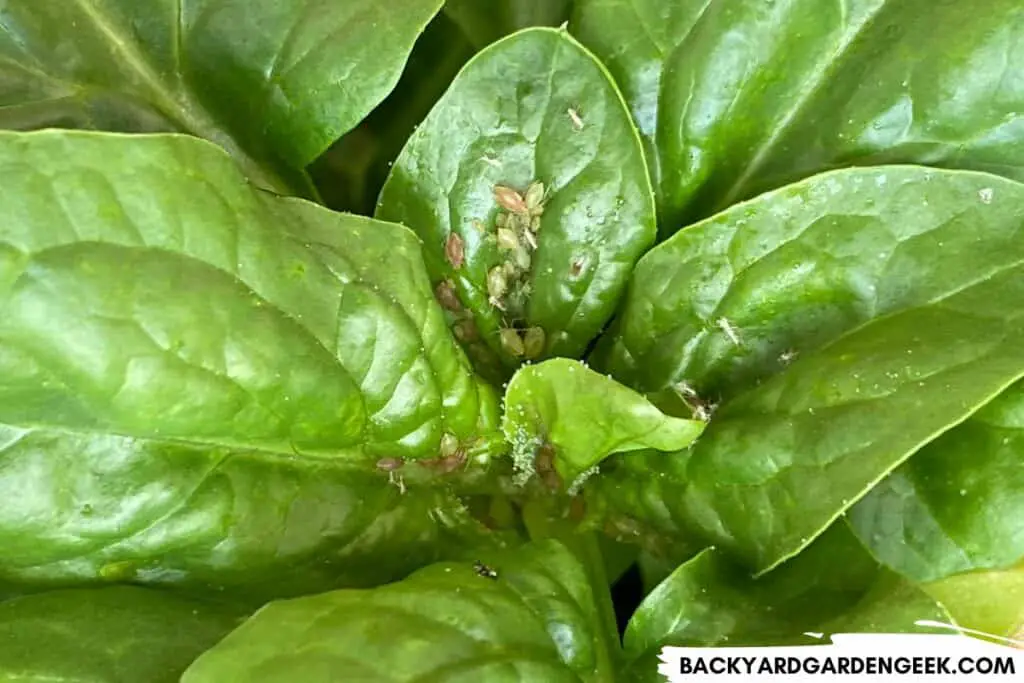
Spinach
Kale might be able to withstand aphid attacks due to the hardiness of its leaves, but spinach isn’t so lucky.
If you see aphids on your spinach, you’ll need to either cross your fingers and hope that ladybugs show up quickly or act fast using my tips below. Unless you see ladybug larvae around your plants, I suggest the latter since aphids can do a ton of damage to the soft leaves of spinach.
Squash
When it comes to squash, I’m less worried about aphids than I am the squash vine borers that are so prevalent in my area, but aphids are still a major squash nuisance.
If they gain a foothold on your squash plants, they can increase exponentially on the undersides of the plant’s large leaves and around its emerging blooms. Over time, they’ll slowly suck the life out of your plant and damage its ability to produce healthy squash for you and your family.
Stone Fruit
This is a broad category that includes apples, cherries, nectarines, peaches, and plums, but generally speaking, aphids like to eat practically all types of stone fruit.
Black and green peach aphids will feed on new spring growth, flower buds, and developing fruit. They’ll smother these areas and cause leaves to roll up and remain underdeveloped, and they’ll cause flowers and fruit to drop before fully developing.
Aphids also cause issues with sooty mold on stone fruit and can increase ant populations on your plants, which is more of an annoyance rather than a danger to your fruit plants.
Sunflowers
Much like okra, sunflowers are something of an aphid trap crop.
Aphids enjoy sunflowers and tend to cluster around emerging buds and leaves, but sunflowers are incredibly hardy and can withstand aphid attacks fairly well. They’ve got sturdy stems and hardy leaves and flowers, so even when aphids such away at their phloem, they retain their ability to grow and thrive.
In fact, I recommend planting sunflowers near other aphid-attracting plants such as beans and cucumbers. If you time things properly, your sunflowers will grow as your bean and cucumber plants are developing, providing a natural trellis for your plants to latch onto while also attracting some aphids that might have otherwise attacked your veggies.
Tomatoes
Tomatoes are one of those plants that are attractive to aphids but can withstand a moderate infestation.
Potato and green peach aphids are usually the culprits attacking your tomato crops, and you’ll most often find them on the hairy stems and undersides of leaves.
When left uncontrolled, aphids will cause leaves to curl and wilt and can stunt the growth of your plant. They’ll also encourage fungal issues via their sticky honeydew secretions.
Do Aphids Eat All Plants?
With the sheer number of aphid species around, you’d think that there wouldn’t be any plants that aphids don’t eat, but you’d be wrong.
There are numerous plants you can grow that won’t get attacked and lots of plant species you can use as companions to help attract aphids and thus keep aphids off your favorite plants.
I’ve found that plants with strong aromatics tend to do best against aphids.
The strong smells that these plants emit is enough to discourage aphids and somewhat blind them from being able to find their preferred targets.
Some of the most common and easy-to-grow companion plants to keep aphids away are:
- Catnip
- Cilantro
- Dill
- Fennel
- Garlic
- Lavender
- Leek
- Marigold
- Mint
- Onion
When planning out your garden, I recommend distributing these plants among those varieties that aphids tend to attack most.
It’s impossible to keep 100% of aphids out of your garden, but if you’re strategic when it comes to planning out your garden beds and distributing your plants properly, you’ll decrease the odds that aphids will be able to swarm entire sections of your garden.
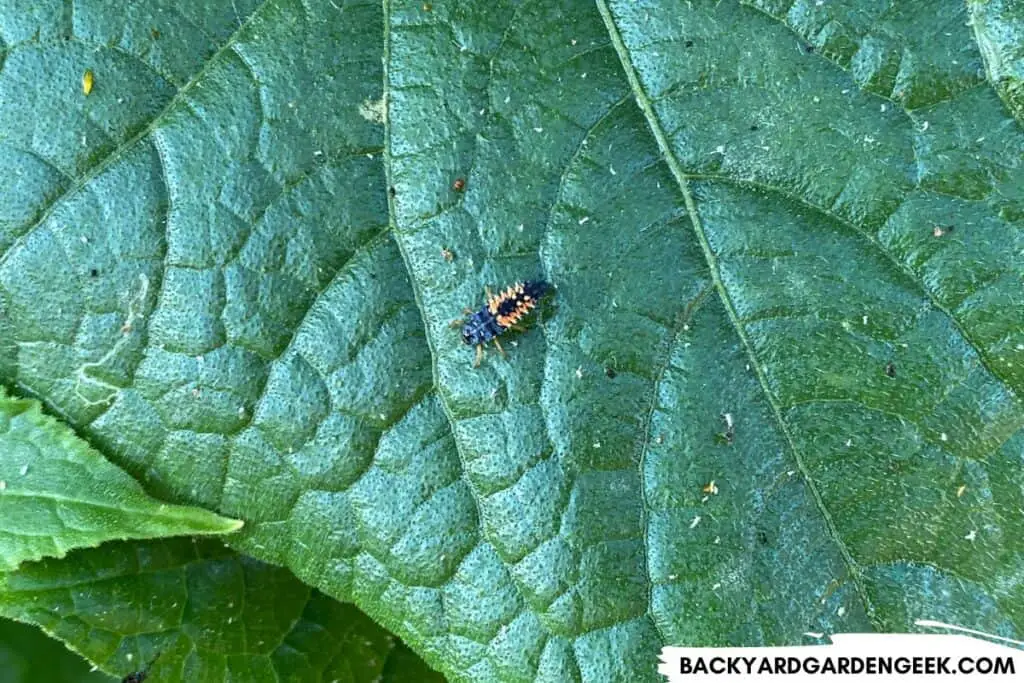
How to Stop Aphids in # Easy Steps
Aphids are an invasive pest that’ll arrive in your garden, spread quickly, and overwinter year after year, so it’s best to make sure they don’t gain a foothold on your property, either through allowing nature to take its course or using organic products to kill them off quickly.
When it comes to killing off aphids, I do these 3 things:
1. Let Beneficial Predators Do Their Things
If your initial impulse when you see aphids for the first time is to immediately reach for a chemical or organic insecticide, I’d encourage you to take a closer look at your plants to determine if that’s the best approach or not.
Assuming you see signs of ladybug larvae on your plants, you’ll definitely want to reconsider before spraying them with any kind of insect-killing product.
Ladybugs are voracious aphid predators, and although aphids can do quite a bit of damage to your garden, it might be worth giving the ladybugs a chance to take care of things before turning to insecticidal options.
Consider these 2 examples:
In the first instance, I had aphids that attacked my plants last spring, but there were a few ladybug larvae among the plants as well. Instead of hosing everything down and spraying the plants with soapy water and neem oil, I gave the ladybugs a chance to do their work.
Unfortunately, I never saw more than 2-3 ladybug larvae among my plants, and the aphids began multiplying and attracting lots of ants, who work to kill off ladybugs and protect the aphids.
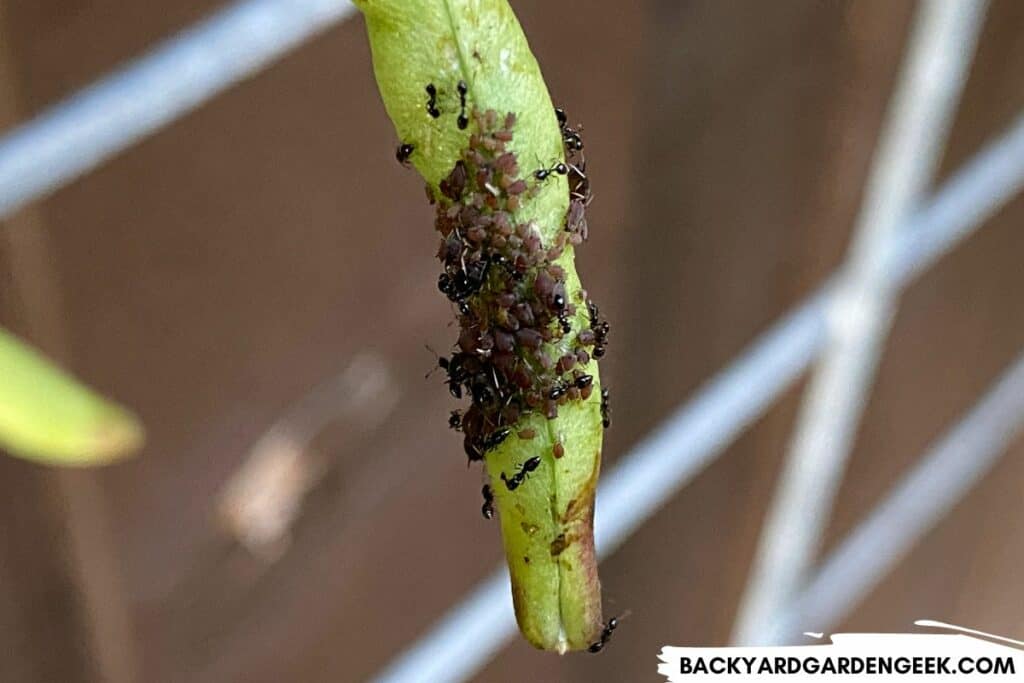
When this happened, I began using soapy water, and I made an effective neem oil spray. I hated to kill off a few ladybug larvae, but I thought the benefits to my garden outweighed the costs.
In the second instance, I noticed aphids on quite a few plants this summer, but I also saw evidence of more than a dozen ladybug larvae and very few ants overall.
Instead of spraying my plants with soapy water or neem oil, I used a small handheld sprayer to target a few aphid clusters with soapy water, spraying them very carefully so as not to hit any beneficial insects, then gave the ladybugs a chance to do their work.
Within a few weeks, the aphid problem had been largely resolved since as the ladybugs did their work and continued to multiply along the way.
2. Spray Aphids with Soapy Water
But let’s be realistic: Sometimes your aphid infestation is such that beneficial insect predators won’t be able to take care of the problem on their own.
In these situations, your best best is to mix up a soapy water spray and cover your aphid-infested plants in it, paying particular attention to the undersides of leaves where aphids often congregate and hide.
Here’s my simple recipe for an effective soapy water spray:
- Fill a 1- or 2-gallon sprayer with water. I prefer 2-gallon sprayers for my soapy water sprays because I don’t have to make the soapy water mixture as often and because it won’t go bad if stored for a few days or weeks.
- Mix 5 tablespoons of soap per gallon of water. I prefer to err on the safe side, so I want to make sure my soapy water sprays are not too watered down. My favorite soaps are castile soap, liquid soap, or insecticidal soap.
- Shake the sprayer thoroughly, then apply to all infested areas once per day (preferably as the sun is setting) for at least 3 days in a row.
3. Spray Plants with Neem Oil
Soapy water spray is usually all you’ll need to get rid of aphids (if you’re consistent with your applications), but there are times when the aphid infestation might be so large or so stubborn that you need extra help getting rid of it.
For these times, I recommend an alternating strategy where you spray neem oil once every 4-7 days, with soapy water used on all other days, until the aphids are gone from your garden.
I’ve discussed this strategy in detail in this article on helping plants recover from spider mite attacks, but here’s a very brief overview:
- Days 1-3: Soapy water spray.
- Day 4: Neem oil spray.
- Days 5-7: Soapy water spray.
- Day 8: Neem oil spray.
Please note that this is a very aggressive treatment plan, and you should only use it if you’ve got an extreme or very stubborn aphid infestation because you can unintentionally kill off beneficial bugs as well.
But if done properly, and if continued until all aphids have disappeared, this plan can help rid your property of aphids.
Additional Information
If you’d like to learn more about what aphids infestations and how to react when you see these little pests in your garden, you might be interested in these related articles:
